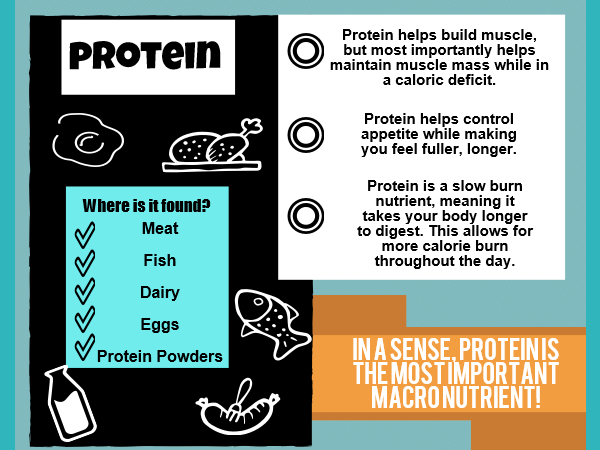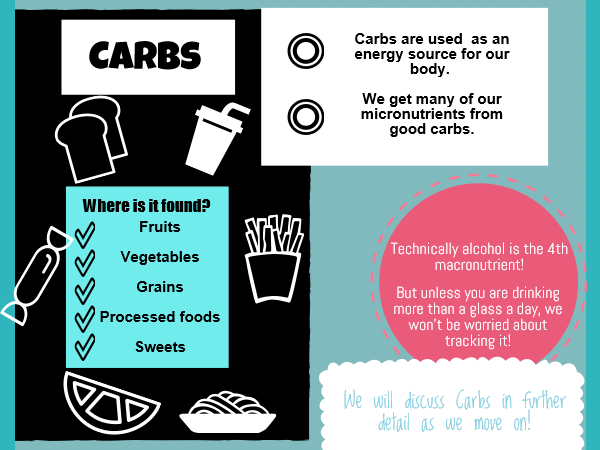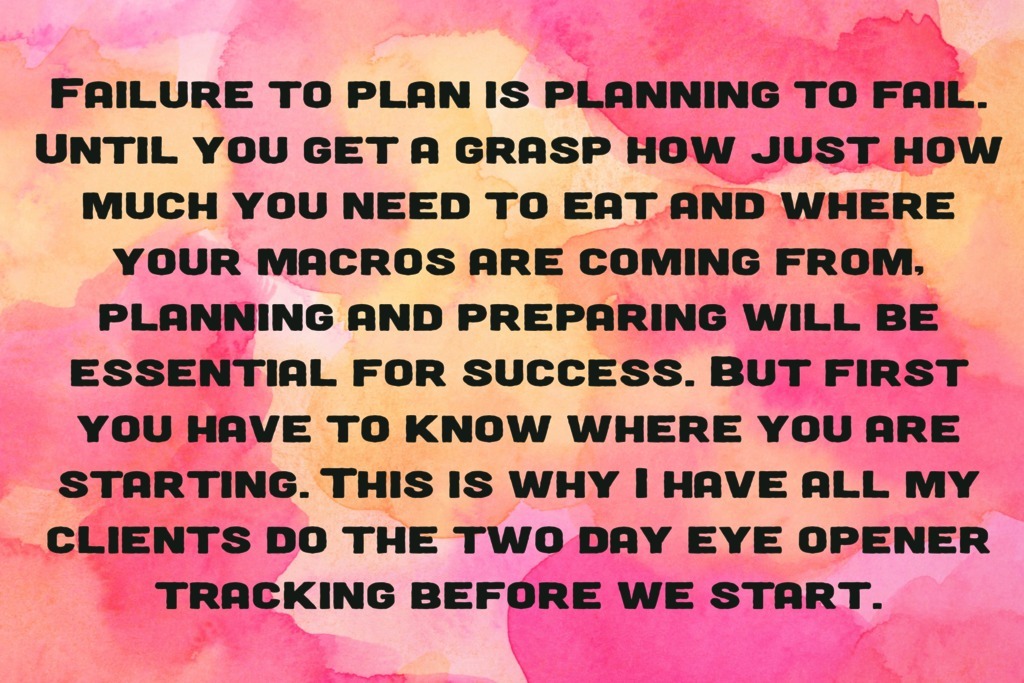Flexible Dieting for Beginners





If you have ever counted calories before, you are
already familiar with tracking. There will be two things that play a vital role
in how successful you will be at hitting your macro targets.
Tracking!
Planning!

Most of my clients have no idea just how little or just how much of one macronutrient they are eating each day. Having a baseline of where you are starting will help you better understand how to get where you need to be.
In the first two weeks, I urge you to pre plan your food for the week. This could be in the form of simply inputting what you think you will be eating for the next day, or going as far as completely meal prepping for the entire week. Obviously, you will not stick to it and things will change throughout your week because life happens. But when you go into the day knowing what how to eat to hit your goals, it’s easier than winging it. You don’t want to come home after a day of winging it to find you are 40g short on your protein and be cramming egg whites down your throat at 9pm.
Eventually, you will have a better idea and learn how to intuitively eat to meet your goals.
Where do I even start?
Foods with nutrition labels
Nutrition labels contain a lot of numbers. It can be overwhelming. We will be focused on the important ones. So what’s the important stuff on a nutrition label? In order from top to bottom on the label:
- Total Fat – This is what you count as your fat. (We will go further into the breakdown and types of fat later but for tracking purposes we will look at TOTAL)
- Total Carbohydrate – This is what you count as your carbs. (We will further breakdown good vs. bad carb, what role fiber plays and other important information later on. But when you track, you only look at TOTAL)
- Protein – This is what you count as your protein.
Be aware of the serving size when inputting. Many of us unawareingly consume -‐23 serving sizes. This is a common mistake I find when evaluating my clients logs the first week. By correcting it, it doubled or tripled their macros for that meal .
Foods without nutrition labels
Many times, the foods you will be eating will not have a nutrition label. This is where MFP will come in handy. It has nutritional values for just about anything you eat. Be careful to choose choices that are verified on MFP. (They will have a green check next to them. These have been verified to have the correct nutritional values.) Also, it has a handy scanner for anything with a barcode that will pull up the info for that specific food. You can also build your own recipes and save them to reuse. But as I said, we will get into how to utilize MFP later.
Until you are familiar with tracking and getting the proper amounts, I suggest buying a food scale. They are cheap, simple to use and a great tool for your kitchen. You might think, “Shelby, isn’t that a bit obsessive? “ But here’s what I have learned fro m experience: We are very bad at measuring things by hand. For instance, many of us eyeball one tablespoon. If you overestimate, it can throw off your macros by more than you think and it adds up over time. Take Olive oil for example. 1 tbsp of olive oilntainsco roughly 13.5g of fat. Assume you eyeballed and were over by ½ a tbsp each time. This adds approx. 7 extra grams of fat. This can have a huge impact if done with frequently used ingredients.
Eating out
The truth of the matter is, life happens. You will not always be eating a perfectly calculated, prepped meal. You will go out to eat with friends. But going out to eat does not have to throw you off track. This is where the‘P’ word comes into play. Planning will allow you to enjoy your time out, and not be breaking a cold sweat staring at a menu wondering how to get your dinner to fit.
Most restaurants offer their menu and nutritional information online. By simply taking a couple minutes to look up what you can have and how it will fit your plan can make for less stress.
But what about....??
Cholesterol
Cholesterol, like saturated fat, is produced naturally in the human body. It has been made a “bad guy”in the nutrition world for years, but doctors and researchers alike seem to be coming around to the idea that it ain’t so bad. Unless you have a history of high cholesterol, don’t stress about this number.
Sugar
Sugar is a carbohydrate. Your nutrition plan is structured to be modified low carb. All of your carbs should not come from sugar or processed foods, but you certainly don’t need to ditch it completely.
When it comes to sugar, it is not necessary to completely eliminate it from your diet. My suggestion is make smart choices.etG sugars from fruits and eat processed sugar sparingly.
Sodium
Sodium is a micronutrient, and we will not worry about counting these. The human body needs sodium to function. Unless you have high blood pressure or another disease that requires a low sodium diet, Iwouldn’t stress too much about this micronutrient.
Dietary Fiber
Fiber is included in the total carbohydrate count. I am sure you have heard about counting net carbs vs. total carbs. For our purposes, a carb is a carb. Counting net carbs can be tricky and confusing and in all honesty is not necessary. However, I do recommend getting proper fiber from sources such as fruits and vegetables.
What to expect the first few weeks of tracking....
Planning and preparing will be keys in how your first couple weeks go. However, even with the most meticulous planning, don’t be surprised if you find yourself struggling. It is common to fail to hit your macros at first. Remember when I mentioned the eating egg whites at 9pm because you were short protein? That was me. Common mistakes people make are underestimating how much carbs they are allowed and using them up before the day is done. Many people find the amount of protein their plan calls for much more than what they are used to and are short there.It is not a failure to struggle your first two weeks. This is precisely why we do the two days of tracking prior to starting. Knowledge is power. Most of us are unaware of what we are lacking. For example, in my very first challenge group I coached, out of 18 women, 11 were consuming less than 15% protein a day. But until they tracked, they thought they were getting proper protein from a little chicken throughout the day. My advice for this learning stage is be patient, be prepared, and be proactive in asking questions if you need help.
You will also be receiving other helpful information and resources to help you reach your goals and how to set up your MFP for your nutrition plan. All I ask is you try to use the tools and resources to try to do it on your own. I believe in teaching you how to do it, vs. doing it for you. However, if you find it difficult and would like a prepared example meal plan, I will be happy to get that to you. *
